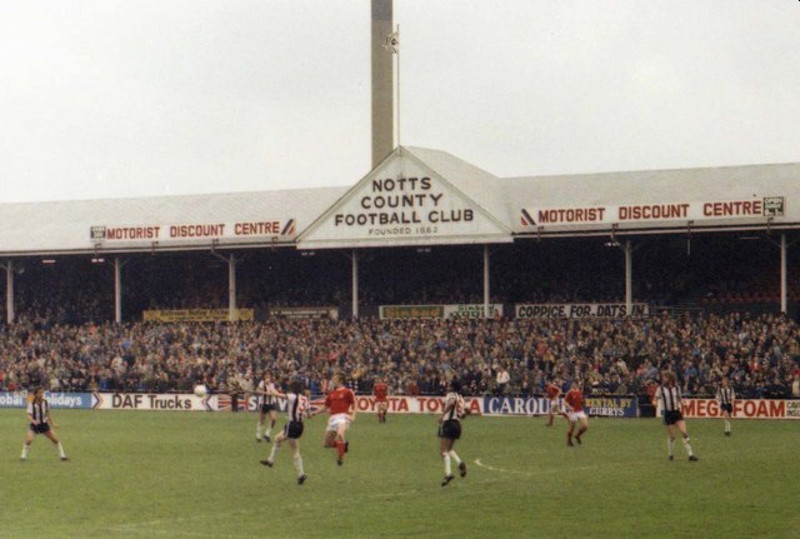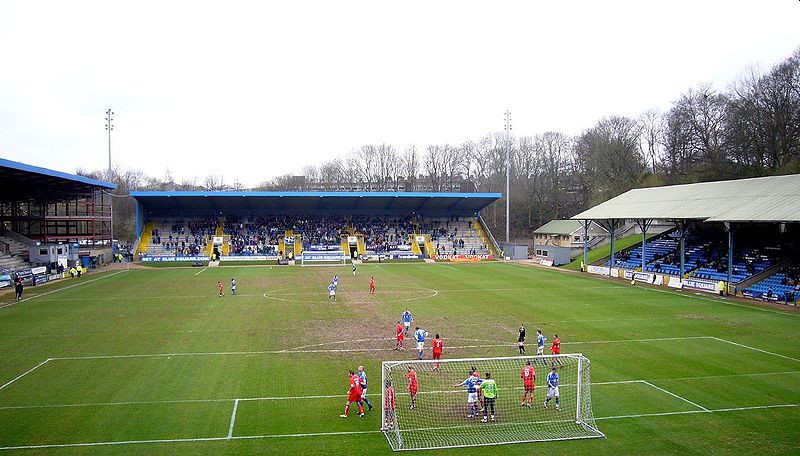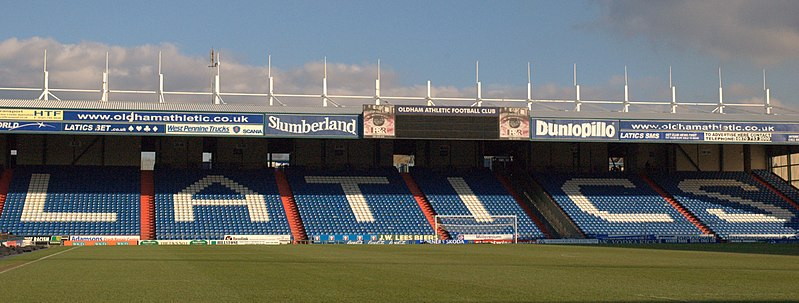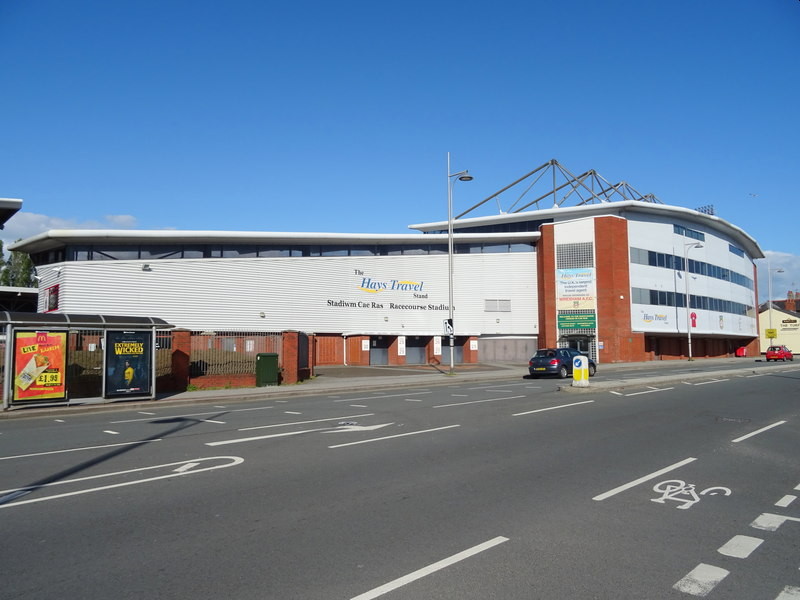With non-League football growing and thriving in England due to the presence of some historic or former League clubs, the facilities at the top of the non-League pyramid are improving every year, which includes stadiums.
However, which stadiums are the biggest in non-League football?
Meadow Lane (Capacity 19,000, Notts County)

Notts County Meadow Lane 1981 – Steve Daniels / Notts County, Meadow Lane, Nottingham
The stadium is situated in Nottingham and is the home of Notts County. Meadow Lane was built in 1910 and played host to some historical games and teams in its century of existence.
Its current capacity is just under 19,000. However, before stadiums became all-seater, the ground’s record attendance was 47,310 in the FA Cup sixth round in March 1955, in which Notts County suffered a 1-0 defeat against York City.
Meadow Lane and the home of the County’s bitter rivals Nottingham Forest are separated by just three hundred yards (270 metres). They are the closest grounds in England.
The Racecourse Ground (Capacity 15,500, Wrexham)

Wrexham Racecourse Ground in 2020 – John Lord from Edinburgh, Scotland, CC BY 2.0, via Wikimedia Commons
The home of Wrexham A.F.C. in Wales is said to be the world’s oldest international football stadium, having been constructed in 1807. It was not used for football until 1864, though.
The Racecourse Ground hosted Wales’ first-ever football international in 1877. The ground still hosts international matches. In fact, no other ground in the country has held more international matches. It is also the fifth-largest stadium in Wales.
The ground’s current capacity is 15,500. However, the record attendance for the Racecourse Ground is 34,445, a figure achieved in 1957 with Manchester United as the Robins’s opponents.
The Racecourse Ground’s Kop end has been unused since 2008 due to safety concerns. However, plans to rebuild the Kop have been approved, and the club are expecting work on the new stand to begin in the summer of 2023.
The Shay (Capacity 14,081, FC Halifax Town)

yellow book ltd, CC BY 2.0, via Wikimedia Commons
The Shay in Yorkshire is the home of F.C. Halifax Town, who have played at the ground since 2008, although their predecessors, Halifax Town, had occupied the stadium since its construction in 1921. The grounds capacity is cited as 14,081, with 10,401 seats and safe standing areas in both the north and south stand.
Despite the ground being over a century old, both the North and the South stands were rebuilt in the mid-1990s as part of a renovation project.
F.C. Halifax Town is not the only resident at the Shay, as Rugby League club Halifax Panthers has also used the ground as their home since 1998.
On November 10th 2013, the Shay also played host to a Rugby League World Cup match between Tonga and Italy, a game that attracted a reported attendance of 10,266.
Boundary Park (Capacity 13,500, Oldham Athletic)

Narniauk at English Wikipedia, Public domain, via Wikimedia Commons
The stadium in Oldham, Greater Manchester, plays host to Oldham Athletic and has a capacity of 13,500. The Latics have occupied the stadium since its construction in 1904, with Oldham experiencing many highs and lows at the old stadium.
In Boundary Park’s nascent years, its capacity was close to 50,000. The highest-ever attendance recorded at the stadium was 47,671 for an FA Cup tie between Oldham and Sheffield Wednesday in 1930. The biggest crowd for a league game came in the same year, in a big promotion clash against Blackpool, as a reported 45,304 attended the stadium.
Famously the stadium had an artificial pitch installed in 1986. This move coincided with the team’s best-ever period on the pitch, a spell that included the Latics reaching the semi-finals of the FA and League cups, as well as featuring in the English top flight.
It is claimed that Boundary Park is the coldest stadium in England. Former Latics manager Joe Royle nicknamed the ground ‘Ice Station Zebra’ in reference to a 1960s film of the same name set in arctic conditions.
Roots Hall (Capacity 12,392, Southend United)

Julieanne Savage / Roots Hall, Southend United F.C.
Work on construction of the site in Southend-On-Sea started in 1952 but didn’t the stadium didn’t open until 1955.
The delay was reportedly because the site was full of waste and took a year to clear. The club had started playing on the same site in 1906 when they formed. However, the land was used for storage during the First World War, and the club moved to Kursaal. Roots Hall also became a quarry for sand and later a rubbish tip.
The club returned to their original homeland 44 years after initially leaving. However, construction work continued when the Shrimpers played their first game at Roots Hall against Norwich City on August 20th 1955.




